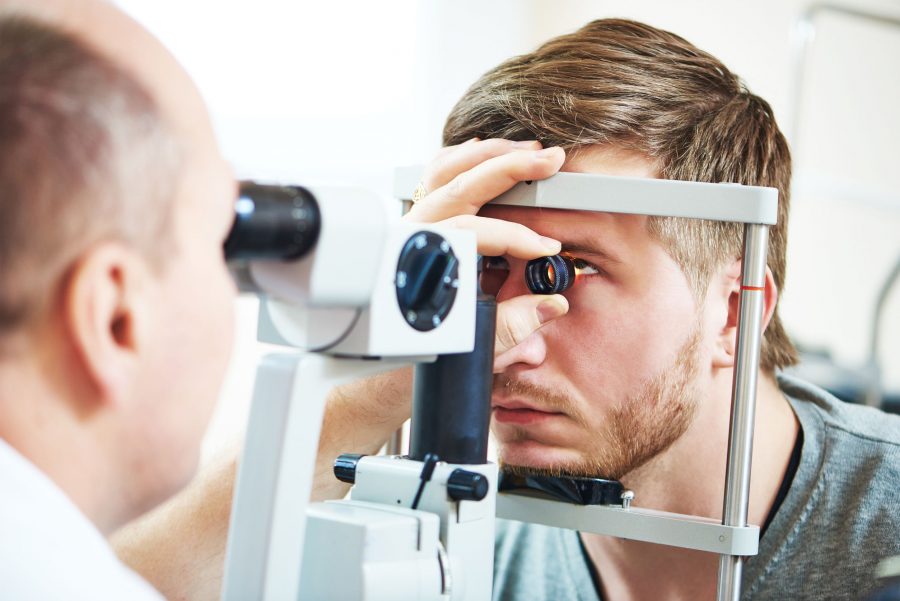
These excruciating headaches are accompanied by visual disturbances and in some cases, the headaches consist entirely of visual irregularities or vision loss. Due to the visual nature of migraines, many patients seek the help of one of our ophthalmologists to diagnose and treat the associated visual disturbances.
At Beach Eye Medical Group, we often find out that patients who suffer from visual problems are unaware that this is a type of migraine1. Once a diagnosis is reached, we will determine whether we can help the patient manage their migraines or if a referral to a neurologist or general practitioner is more appropriate.
Migraine headaches2 are classified into several types. Doctors and researchers believe that all migraines share a common cause, despite having different symptoms and characteristics. The 3 most common classes of migraines are:
Ocular migraines cause repeated attacks of specific monocular (occurring in one eye) visual disturbances or vision loss. The visual disturbances tend to last for about ten to twenty minutes and can occur with or without a headache. Eye doctors and researchers believe that a vascular spasm in the retinal or ophthalmic artery may be the cause of visual loss during an ocular migraine.
Since visual disturbances are a symptom of a classic migraine, an ocular migraine that occurs with an aura can be mistaken for a classic migraine. During an ocular migraine, the visual symptoms only occur in one eye, whereas the visual disturbances associated with the aura phase of a classic migraine occur in both eyes. In addition, temporary complete blindness may occur in one eye during a retinal migraine – complete monocular blindness does not typically occur during classic or common migraines.
When you come in for a consultation, our eye doctor will perform a medical exam to rule out other possible causes of the visual disturbances, including stroke, tumor, detached retina or blood clot. Patients who suffer from ocular migraines will have a normal retina upon exam.
The visual symptoms of an ocular migraine include:
These symptoms will occur only in one eye. If they occur in both eyes, the patient is likely suffering from a classic migraine or something else altogether.

Genetics, family history, and environmental factors are thought to play a role in an individual's susceptibility to migraines. Research has shown that there are common triggers that may cause any type of migraine:
If a migraine occurs without a subsequent painful headache, medications may not be required. If a patient is suffering from painful headaches, prescription medication can be prescribed to shorten the duration of a headache and manage pain.
Treatment for any type of a migraine includes the identification and avoidance of any factors that may trigger the migraines. Most doctors request that their migraine patients keep a detailed journal for several weeks to help identify migraine triggers.
Some people who suffer from ocular migraines go on to later develop permanent vision loss in one eye. As such, it is important that patients who suffer from ocular migraines undergo regular monitoring of their condition so that any potential vision loss is identified and treated early.
If you experience recurrent episodes of visual disturbances or vision loss in one eye, please contact our practice to schedule an appointment today. Our experienced ophthalmologists will determine whether you are suffering from a true ocular migraine or from other conditions. We provide ongoing monitoring to patients who suffer from ocular migraines and will refer you to other specialists who treat severe headaches, if necessary.
References
1 Types of Migraine Headaches. Available: https://www.webmd.com/migraines-headaches/migraines-headaches-migraines
2 What Is Migraine?. Available: https://www.webmd.com/migraines-headaches/migraines-headaches-migraines
3 Retinal migraine. Available: https://www.nhs.uk/conditions/retinal-migraine/
Outstanding service, I was taken in at my appointment time and provided exceptional service. The staff is professional and humorous. I was able to see to see a most exceptional eye physician who took care of my issue rather quickly. Thank You